
As fashion lovers, we all know the feeling of having a full closet yet believing there’s “nothing to wear.” This constant cycle of buying too much only leads to waste and a drained bank account. Luckily, the amazing world of sustainable style and Reusable Outfits offers a better way to look great. Join us as we explore how this movement helps your personal style, your wallet, and the well-being of the planet.
Fast Fashion and Reusable Outfits
We live in a world that always wants what is new. It is easy to get pulled into the quick flow of fast fashion. New trends come and go faster than we can buy them. This leaves us with clothes we never wear and harms the environment more and more. But what if there was a better way? A way to dress that is thoughtful, fun, and looks great? Welcome to the world of reusable outfits. Here, style gets better, not lost, by making smart choices and loving what you already have.

This is not just about saving cash (though you certainly will!). It is about finding a style that is truly yours. And about causing less harm to the planet. It is also about the great feeling of turning old items into fresh, exciting looks. Forget the idea that earth-friendly fashion is boring; today, we will look deeply at how to dress great with reusable outfits you must see—and how you can make them yourself.
The Problem with “New”: Why Reusable Fashion Matters
Let’s first talk about the big issue in shopping: fast fashion hurts our world. The constant wish for cheap, trendy clothes has caused huge costs for the environment and for people. Think about the facts: Cotton farming uses lots of water and chemicals. Harmful dyes pollute rivers. Huge piles of old clothes sit in dumps. The impact is massive. Add to this the concerns about workers in many clothing factories, and it is clear that what we buy has big effects.
Reusable fashion is a strong answer. When we make clothes last longer, we lower the need for new things to be made. We save resources. And cut down on waste. We even reduce the air pollution that comes from making and moving clothes. It is a win for the Earth, a win for kind shopping, and a big win for your own style.
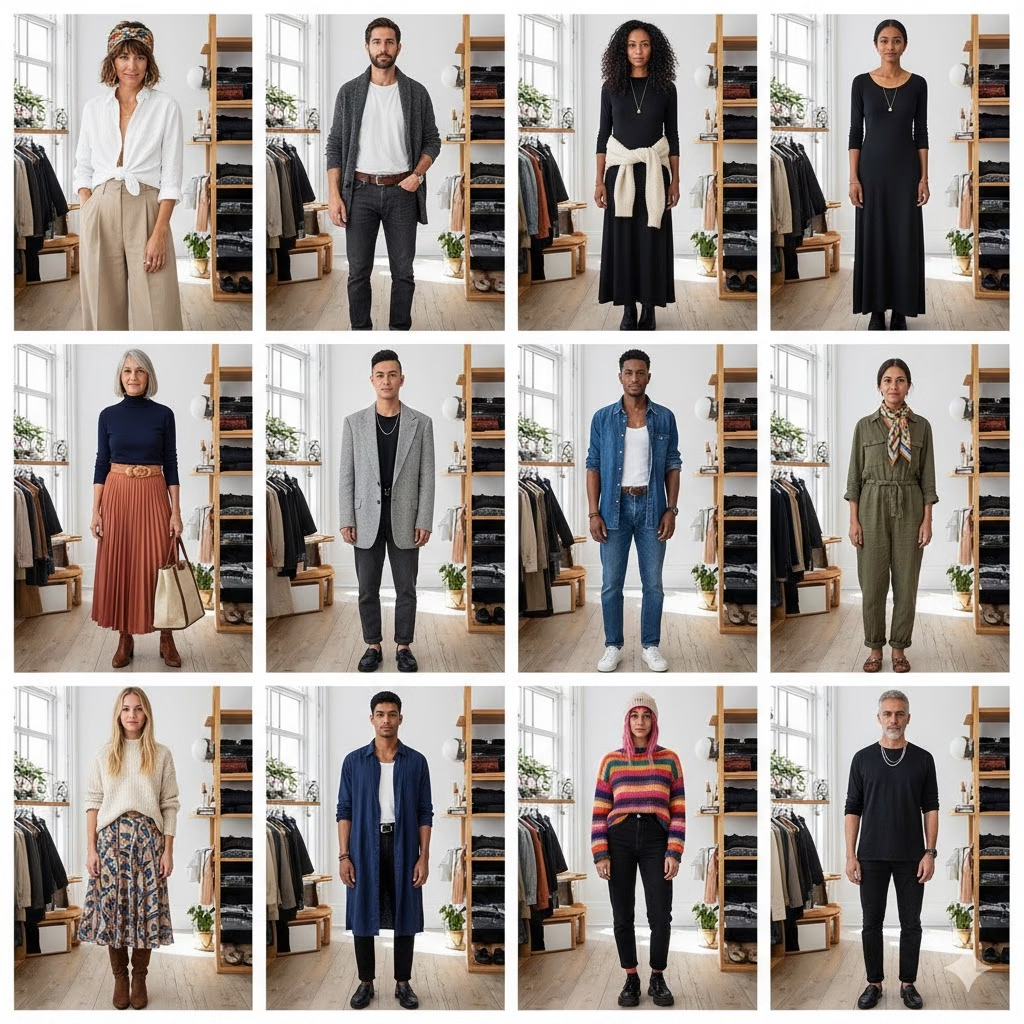
What Exactly are Reusable Outfits?
At its heart, reusable fashion means clothes that last and can be used in many ways. It means seeing your clothes not as things you will soon throw away, but as smart buys and core pieces. A reusable outfit is not always something you bought second-hand (though thrift store finds are amazing!). It is any look made from clothes you own, clothes you have fixed or changed, or items you bought with the goal of wearing them often and in many styles.
Think about it: that simple white shirt, those perfect trousers, that denim jacket—these are the heroes of reusable fashion. The magic happens when you see them not as fixed items, but as parts that can be mixed, styled, and changed up forever.
The Pillars of Sustainably Slaying: How to Build Your Reusable Wardrobe
Making a closet centered on reusable outfits takes time, but the reward is huge. Here are the main steps:
1. Master the Art of the Wardrobe Audit: Reusable Outfits
You must know what you have before you can build. The first step to embracing reusable outfits is to truly know what you own now.
How to Do It:
- Take Everything Out: Do it. Take every piece of clothing, every belt, every shoe out of your closet and drawers.
- Make Groups: Put similar items together (all shirts, all jeans, all dresses).
- The “Keep, Fix, Give Away” Rule:
- Keep It: You love these items. They fit well, feel good, and are useful.
- Fix It: These items need a small repair (a missing button, a small rip). Do not throw them out! They can become core reusable items.
- Give It Away: These are items that do not fit, are too stained to fix, do not match your style, or have not been worn in a year. Put them in piles to sell, give away, or turn into cleaning cloths.
- Find Missing Items: Once you see all your clothes, you can find things you truly need (e.g., a good basic black top). This stops you from buying things you do not need.
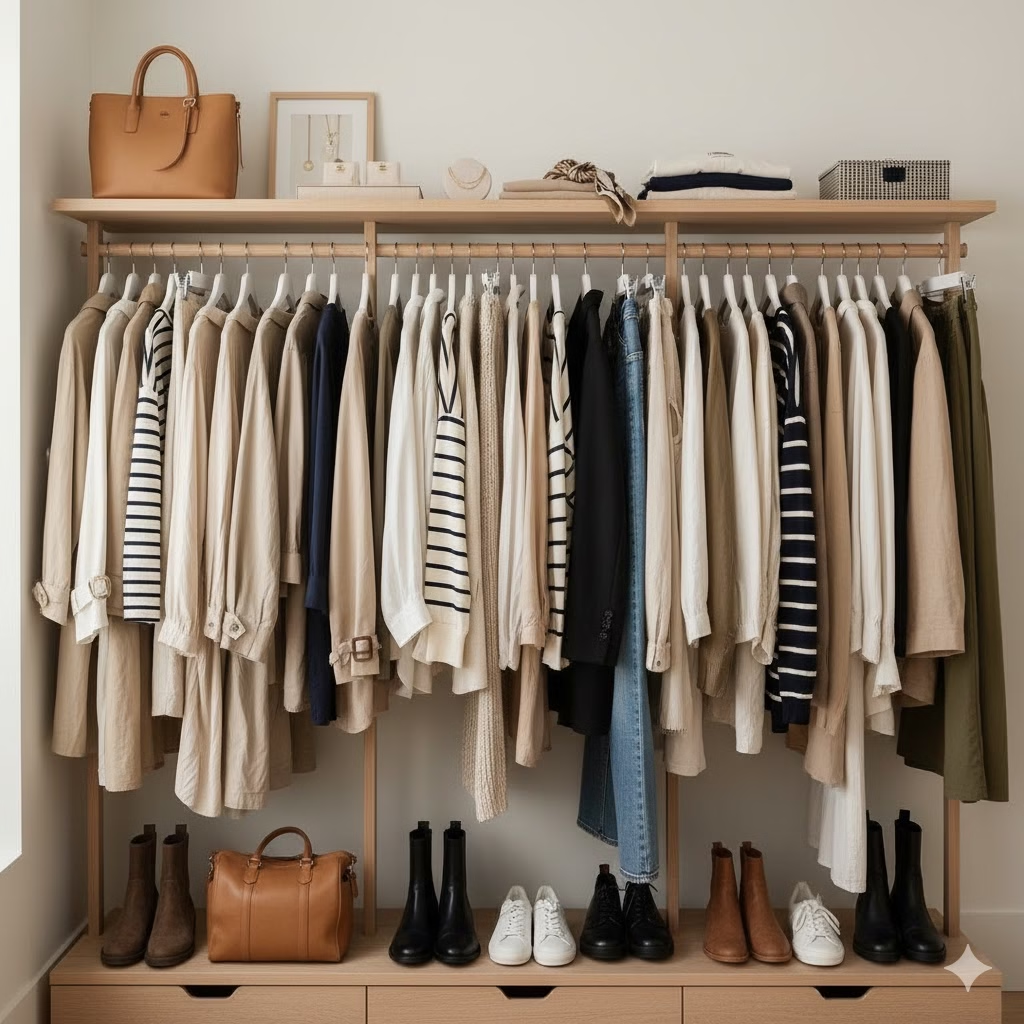
2. Embrace Quality Over Quantity
This is the most important change in how you think. Fast fashion needs cheap, disposable items. Reusable fashion needs well-made items that will last a long time.
How to Do It:
- Spend Wisely: When you do buy new (after finding a real need), choose items with better materials (cotton, linen, wool), strong sewing, and simple designs that will not look old next season. Think about how much it costs each time you wear it, not just the price tag. A high-quality item worn 100 times costs much less per wear than a cheap item worn twice.
- Shop Second-Hand: Thrift shops, old clothing stores, and online sites (like Depop, ThredUp) are great places to find high-quality, pre-loved clothes. This is the best way to do reusable fashion! You find special items, often cheaper, and give them a new life.
3. Cultivate Versatility: The Capsule Wardrobe Approach
A capsule wardrobe is a small set of clothes that all work together. This helps you make the most number of outfits possible. It is the best plan for reusable outfits.
How to Do It:
- Pick Colors: Choose one main color (like black, blue, or gray) and a few bright colors. This helps make sure everything matches.
- Focus on Key Pieces: Pick useful basics like good jeans, classic pants, a simple skirt, basic tops, a jacket, and an easy dress.
- Layering is Key: Think about how items can be worn over or under each other to make new looks and suit the weather. A simple dress can be worn alone, over a shirt, or under a thick sweater.
- Mix and Match: Push yourself to try new pairings with the clothes you already have. Take pictures of good outfits to use as ideas later.
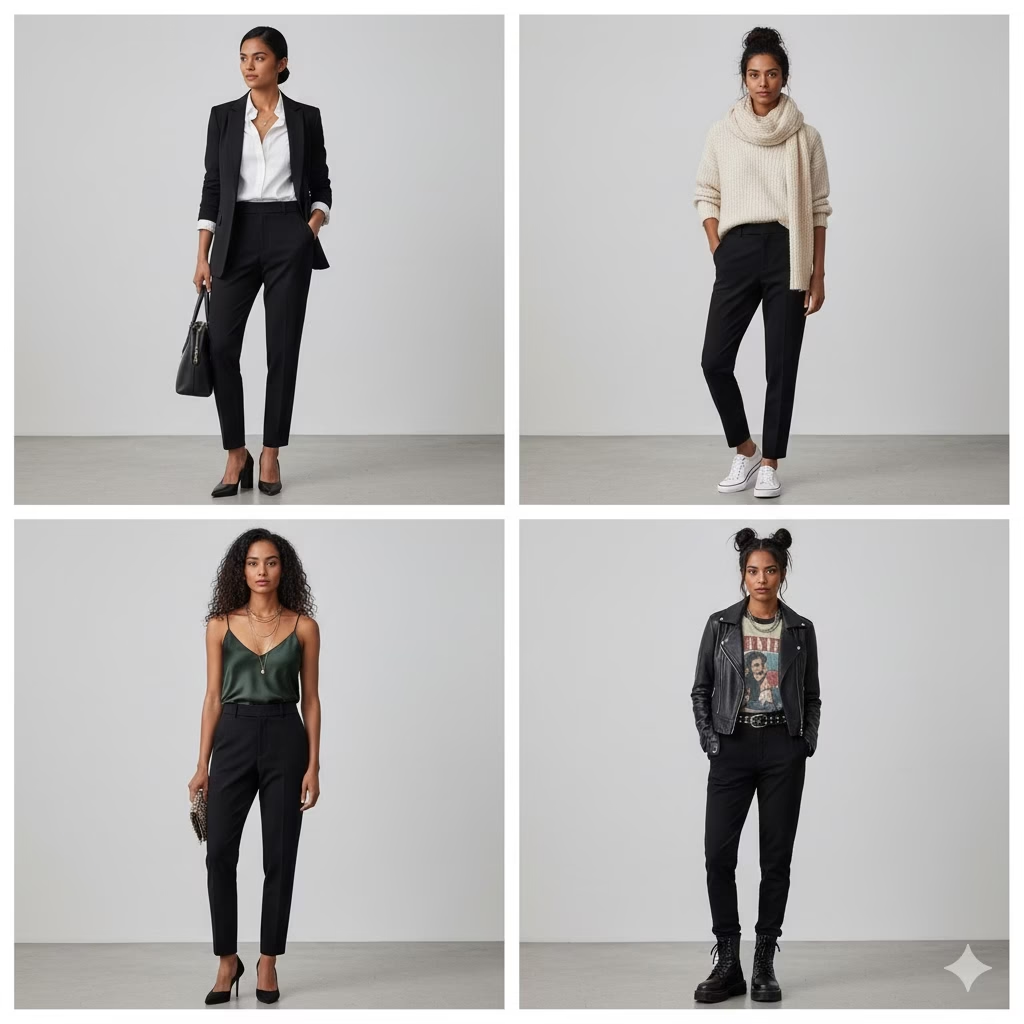
4. The Power of Accessories and Styling
Small items like jewelry and bags are the secret weapon of reusable outfits. They can totally change how a simple piece of clothing looks.
How to Do It:
- Scarves: A scarf can be used in your hair, as a belt, a top, a bag decoration, or simply around your neck.
- Belts: Use a belt to make a loose dress fit better, add shape to a thick sweater, or dress up simple jeans.
- Jewelry: Big necklaces, small chains, hoop earrings, or bracelets can quickly change if an outfit is formal or casual.
- Shoes & Bags: Changing sneakers for heels, or a big tote for a small clutch, instantly changes the outfit’s purpose.
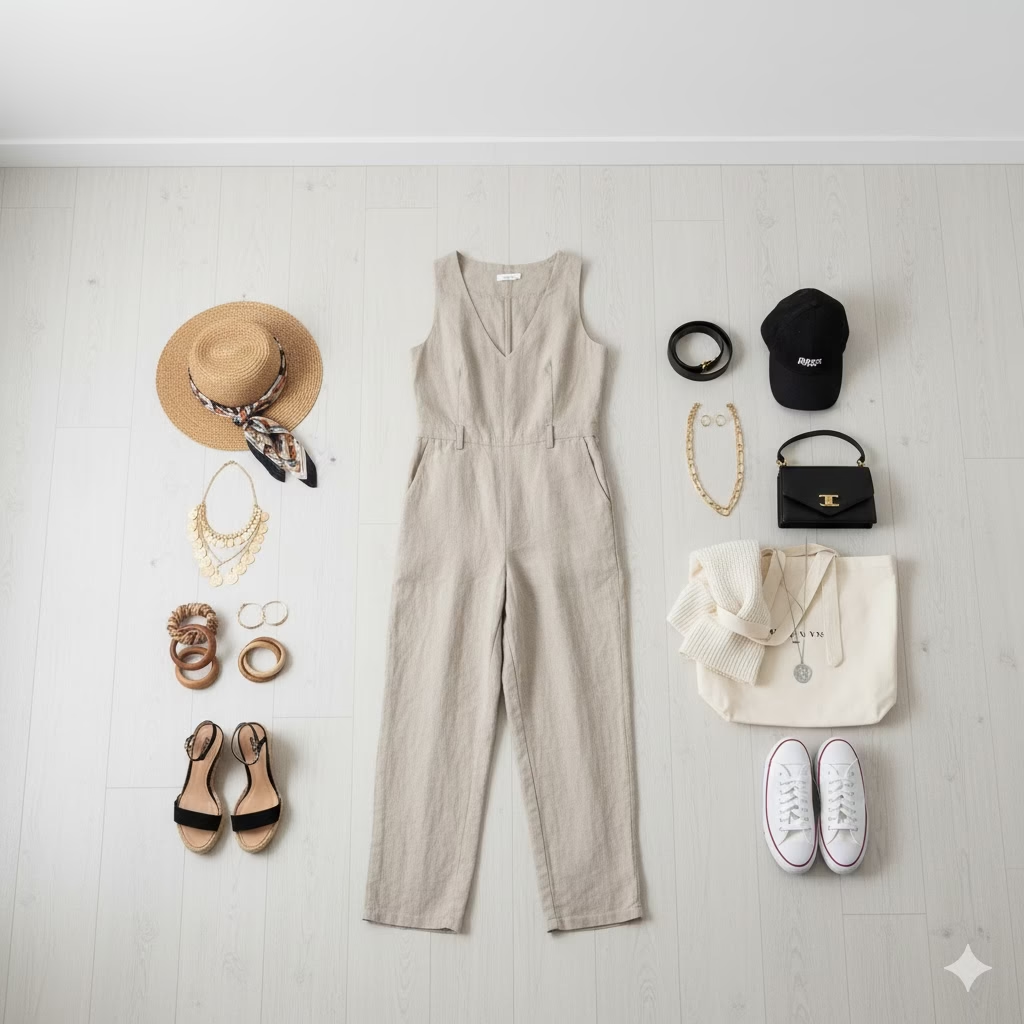
5.Reusable Outfits: Repair, Repurpose, Reimagine
Do not throw away clothes just because of small issues. This is where true sustainable slaying happens!
How to Do It:
- Learn Basic Mending: A simple sewing kit can fix missing buttons, loose seams, and small tears. Videos online are very helpful here!
- Use a Tailor: A garment that fits perfectly looks much better. Take items to a tailor for small changes (making pants shorter, taking in the waist). This is an investment that makes the item last.
- Upcycling/DIY:
- Turn old jeans into shorts or a skirt.
- Make an oversized shirt or sweater shorter.
- Add patches or designs to hide stains or tears, making them a cool feature.
- Change the color of faded clothes with fabric dye.
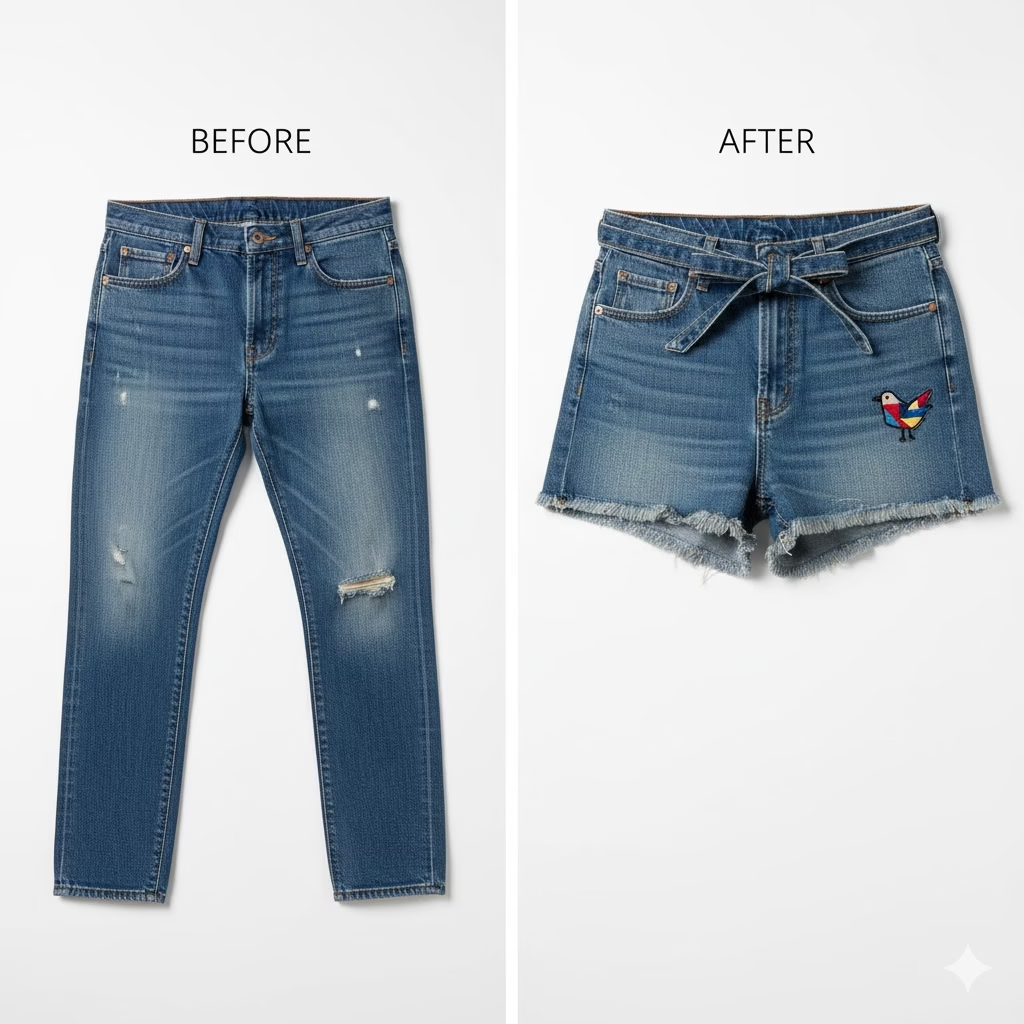
Reusable Outfits in Action: Examples to Inspire You
Let’s see how these ideas work in real reusable outfits. Imagine having these few core pieces and seeing all the possibilities:
Example 1: The Versatile Black Midi Dress
Your Core Piece: A simple, well-fitting black midi dress.
- Casual Day Out: Black dress + white shoes + denim jacket tied around your waist + a baseball cap.
- Office Chic: Black dress + smart jacket + high heels + a nice necklace.
- Evening Glam: Black dress + thin-strapped heels + simple gold jewelry + a small, elegant bag.
- Cozy Weekend: Black dress + thick knit sweater worn over the top (making the dress look like a skirt) + ankle boots.
- Bohemian Vibe: Black dress + wide-brimmed hat + many layered necklaces + rope sandals.
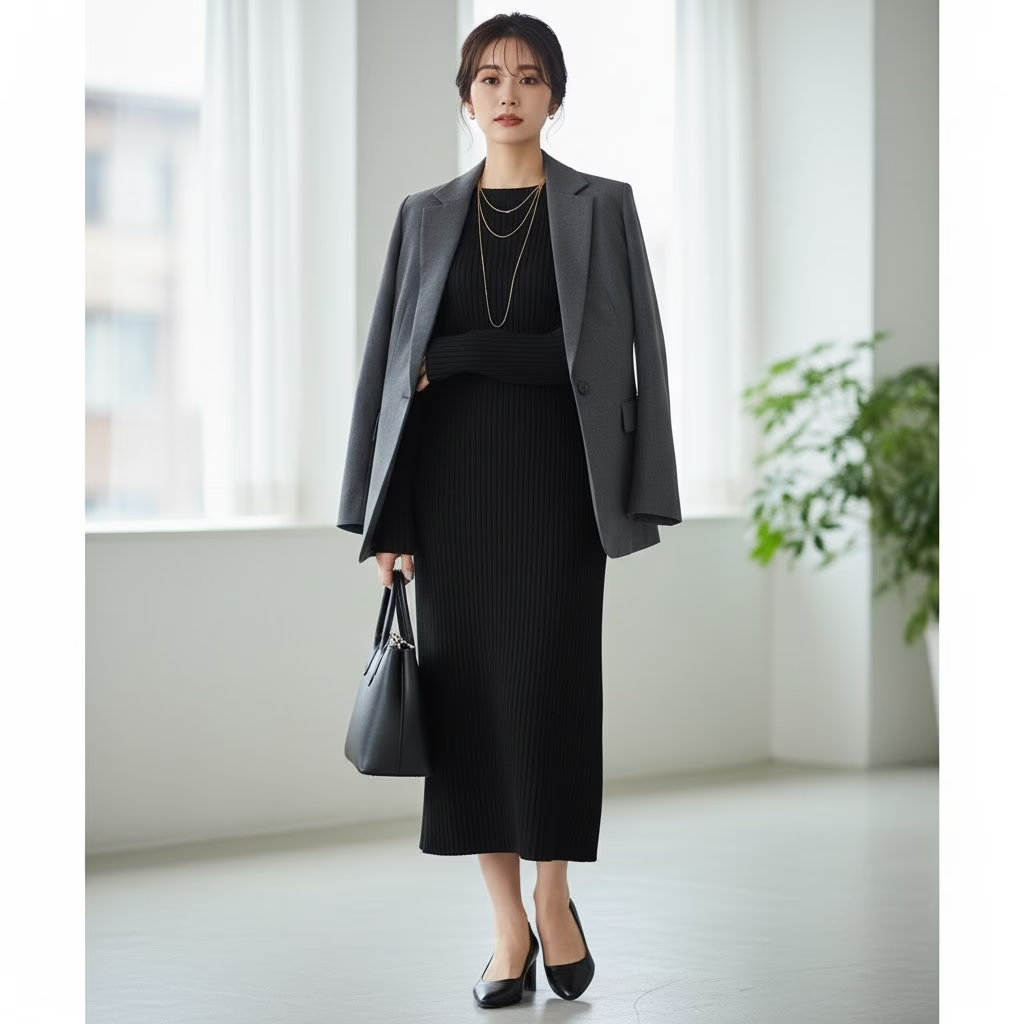
Example 2: The Classic White Button-Down Shirt
Your Core Piece: A crisp white large button-down shirt.
- Effortlessly Cool: White shirt open over a tight top + high-waisted jeans + sneakers.
- Polished Professional: White shirt tucked into smart pants + a thin belt + simple, flat shoes.
- Beach Ready: White shirt worn open over a bathing suit + denim shorts + sandals.
- Unexpected Glam: White shirt partly tucked into a silk skirt + heels + large earrings.
- Layered Look: White shirt under a round-neck sweater, with the collar and cuffs showing + cotton pants.
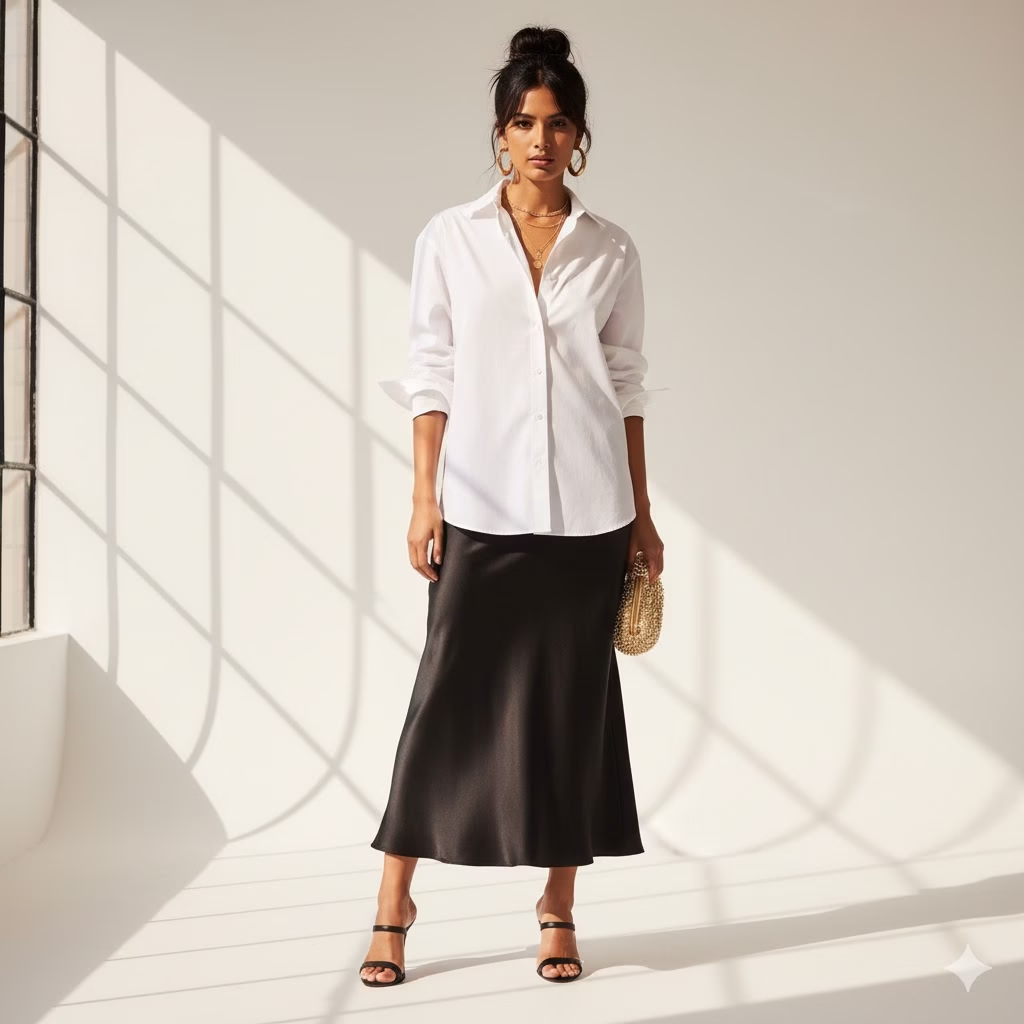
Example 3: The Beloved Pair of Jeans
Your Core Piece: A comfortable, great-fitting pair of blue jeans.
- Classic Casual: Jeans + fun graphic tee + sneakers + an open cardigan.
- Smart Casual: Jeans + a silky top + a blazer + heels.
- Cozy Comfort: Jeans + a large, soft sweatshirt + thick socks for resting at home.
- Boho Edge: Jeans + an embroidered shirt + ankle boots + a bag with fringe.
- Date Night: Jeans + an off-the-shoulder top + simple jewelry + heeled slip-on shoes.
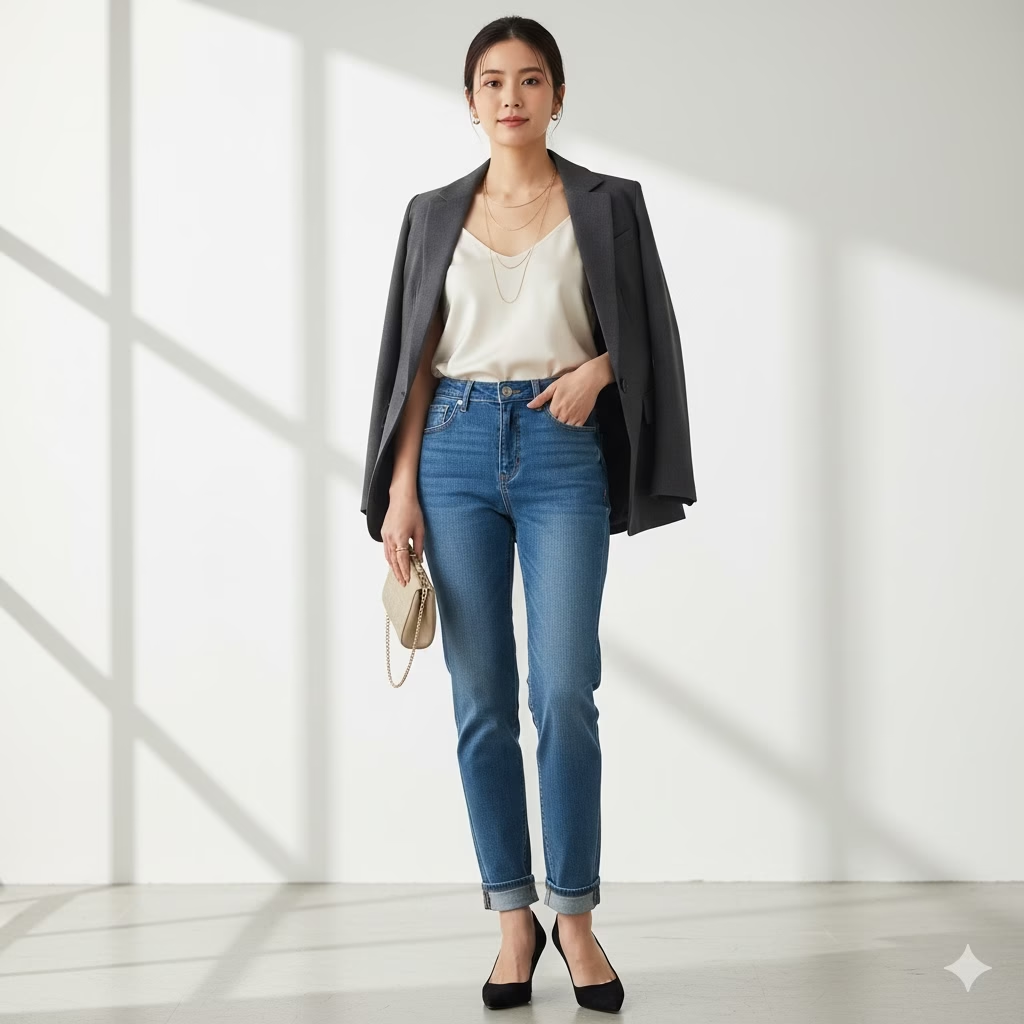
The Joy of the Sustainable Slay: Reusable Outfits
Choosing reusable outfits is more than just a trend; it is a way of life that feels deeply satisfying. And also makes you use your clothes in more fun ways. It makes you value the quality of good clothing. It helps you find a unique style that is not just based on passing fads.
Imagine the feeling of confidently walking into a room, knowing your outfit is not only stylish but also a sign of smart choices. This is more than just wearing clothes; it’s making a profound point. You instantly become part of a growing group that believes in long life, creativity, and caring for the world—you are, simply put, sustainably slaying.
It might feel hard at first to stop the need to buy new things all the time. But with every good outfit you make from your own closet, every repair you do, and every smart second-hand buy, your style will become clearer and stronger. Your closet will turn into a small, cherished collection, not a mess of forgotten items.
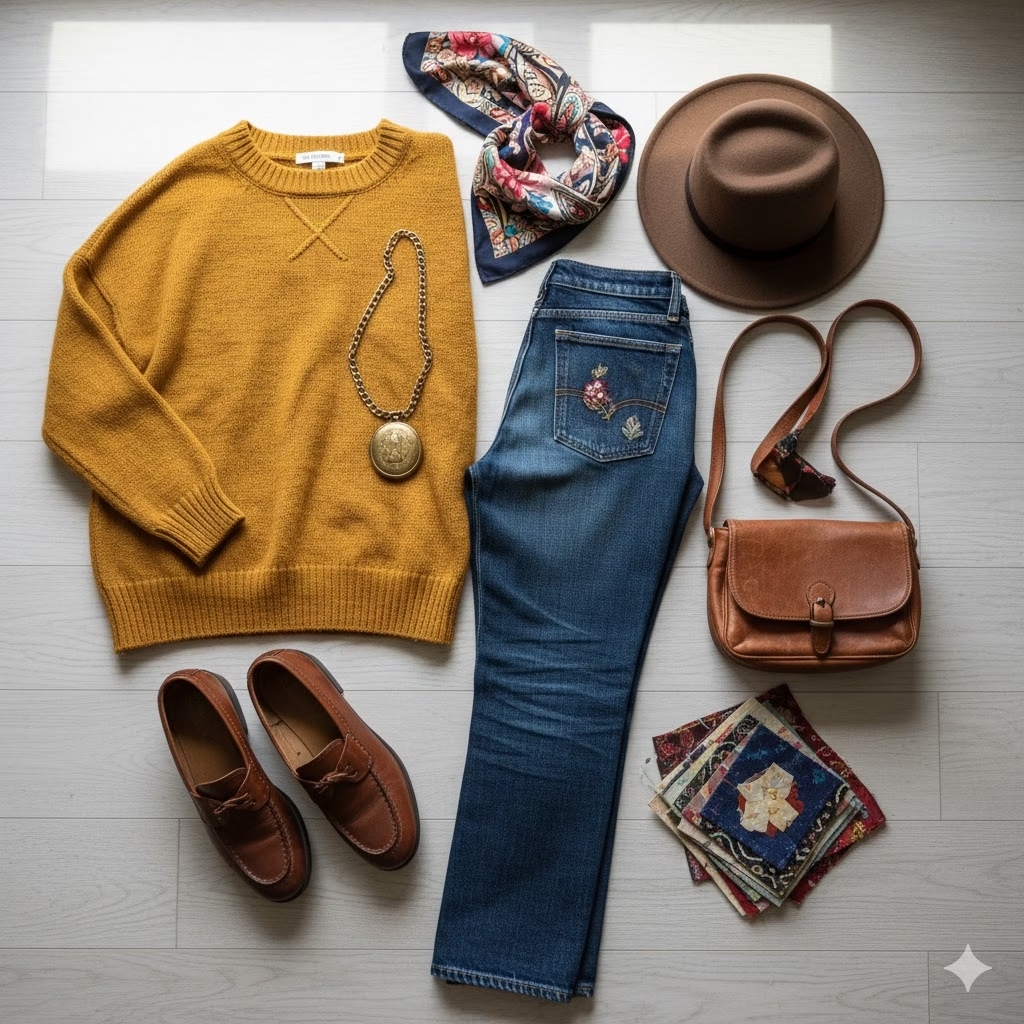
So, are you ready to change your closet and your view on fashion? The world of reusable outfits is here, showing a future where great style and care for the Earth go hand-in-hand. Start with one item, one outfit, one small change, and watch your style—and your impact—change for the better.
FAQ: Your Reusable Outfit Questions Answered
Q1: Is reusable fashion only for people who are good at sewing?
A1: Not at all! It helps to know how to sew, but you do not have to be an expert. Many tailors and dry cleaners can fix clothes for a small fee. Just learning how to reattach a button or sew a small tear can make a piece of clothing last much longer. Also, you can change clothes without sewing, like cutting jeans into shorts or tying a shirt in a new way.
Q2: How do I find good quality second-hand items?
A2: Look for natural materials (cotton, linen, wool, silk) because they usually wear well and feel better. Look at the seams for loose threads. Check zippers and buttons. Look for stains or holes that cannot be fixed. Shopping in richer areas or on certain websites can often lead to better brands. Do not be afraid to try things on and see how you can wear them with the clothes you already have.
Q3: What if I get tired of my reusable outfits?
A3: This is where you get creative!
* Accessories: As we said, scarves, belts, jewelry, and different shoes can totally change the look of an outfit.
* Layering: Add a jacket, vest, or cardigan. Wear a top open over a dress or t-shirt.
* Hair and Makeup: These can greatly change your whole look without changing any clothes.
* Seasonal Swaps: Put away some clothes for a season and bring them back later. They will feel new again.
* DIY/Fixing: Change the color of a faded item, add patches, or have a tailor change the shape of the clothing.
Q4: How many clothes do I need for a good reusable wardrobe?
A4: There is no perfect number. The goal is to have a set of clothes where most items can be mixed and matched. Some people aim for a “capsule wardrobe” of about 30 to 50 items (including shoes and jackets) for each season. This is a guide, not a rule. Focus on having enough choice to make different looks without having too much stuff.
Q5: Is sustainable fashion more expensive?
A5: Buying new, high-quality items can cost more at first than cheap fast fashion. But you will save money over time because those clothes last longer. You do not have to replace them as often, and you will shop less. Buying second-hand is often much cheaper than buying new, making sustainable fashion very easy on your wallet. It is all about choosing quality and long life over a lot of cheap stuff.

References
- University of Minesota – Overdressed
- Columbia University – Consumed: How Markets Corrupt Children
- Remake World – A BEGINNER’S GUIDE TO SUSTAINABLE FASHION 10
Recent Posts


